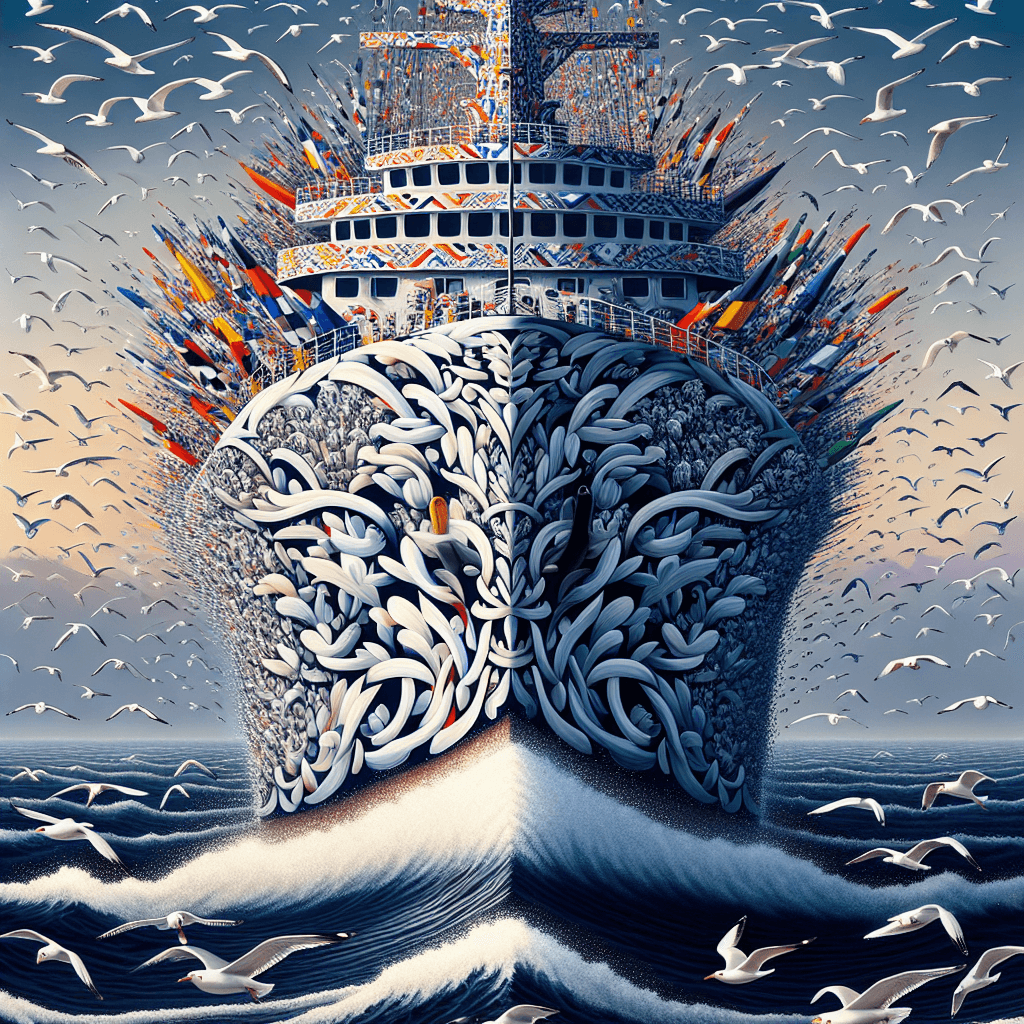Why did navies paint ships with dazzling patterns to confuse, not hide
It was a bizarre strategy of visual warfare: instead of making ships invisible, navies painted them with wild, dizzying patterns specifically designed to fool an enemy's aim.


Too Long; Didn't Read
Since hiding a ship on the open ocean is impossible, navies used dazzle camouflage to confuse enemy targeting, not to conceal the vessel. The jarring geometric patterns made it difficult for an enemy to accurately judge a ship's speed, heading, and range, causing them to miscalculate torpedo attacks.
Blog Post Title: The Art of Deception: Why Did Navies Paint Ships with Dazzling Patterns to Confuse, Not Hide?
Introduction
Imagine a massive warship on the open ocean. Instead of being painted a subtle grey to blend in with the sea, it’s covered in a chaotic jumble of bold, contrasting stripes and jarring geometric shapes. It seems counter-intuitive, a design choice meant to draw attention rather than deflect it. Yet, during the First and Second World Wars, thousands of Allied ships were adorned with these bizarre patterns. This was "dazzle camouflage," a revolutionary strategy that embraced visibility. This post explores the brilliant, counter-intuitive logic behind dazzle paint, revealing why, in the high-stakes world of naval warfare, confusing the enemy was a far more effective tactic than attempting to hide.
Main Content
The Problem: Hiding in Plain Sight is Impossible
During World War I, the rise of the German U-boat submarine posed a devastating threat to Allied naval and merchant fleets. The conventional wisdom of camouflage—to blend in with your surroundings—proved almost useless on the open sea. A ship is a massive object that will inevitably be silhouetted against the horizon, making it a clear target. The sky, sea, and light conditions change constantly, so no single color scheme could provide effective concealment. British marine artist and Royal Navy officer Norman Wilkinson recognized this fundamental problem. He argued that since it was impossible to hide a ship, the goal should be to make it a difficult target to hit.
Enter Dazzle: The Art of Confusion
Wilkinson's solution, officially adopted by the British Admiralty in 1917 and later by the U.S. Navy, was dazzle camouflage (or "Razzle Dazzle" in the United States). Inspired by modernist art movements like Cubism, which broke down subjects into geometric forms, dazzle patterns were never intended to conceal. Their sole purpose was to confuse a submarine commander peering through a periscope.
To launch a torpedo successfully, a U-boat captain needed to accurately judge four key things about his target:
- The ship's class: Was it a valuable warship or a less critical merchant vessel?
- Its range: How far away was it?
- Its speed: How fast was it traveling?
- Its course: In which direction was it heading?
An error in any of these calculations would cause the torpedo—an unguided "dumb" weapon that traveled in a straight line—to miss its target. Dazzle camouflage was engineered to disrupt the visual cues used to make these judgments.
The Mechanics of Deception
The bold patterns of dazzle worked by breaking up the familiar lines of a ship's hull, funnel, and superstructure. The visual trickery made it incredibly difficult for an observer to determine where the ship began and ended. Specific techniques included:
- Confusing the Bow and Stern: Strong diagonal lines could make it unclear which direction the ship was traveling. An enemy might fire at the bow, thinking it was the stern, missing the ship entirely.
- Distorting Perceived Speed: Painting a false bow wave on the hull could make a ship appear to be moving faster than it actually was, causing a U-boat to lead the target by too much.
- Obscuring the Ship's Outline: The intersecting shapes and colors made it hard to discern the ship's angle relative to the submarine, a critical factor for calculating a firing solution.
Each ship's dazzle pattern was unique to prevent enemies from learning to recognize the patterns of specific ship classes. Small-scale models were painted and observed through periscopes in a studio to ensure the patterns worked effectively from the enemy's likely viewpoint. While its direct statistical impact on sinking rates remains a subject of historical debate, post-war reports indicated that dazzle-painted ships were believed to be attacked less often, and when attacked, were more likely to survive. The system’s greatest success was arguably in boosting the morale of merchant marine crews, who felt they were being given a fighting chance against the submarine menace.
Conclusion
Dazzle camouflage stands as a brilliant testament to creative problem-solving under pressure. By abandoning the futile goal of invisibility on the open ocean, naval strategists embraced a radical alternative: confusion. The strategy's success lay not in hiding ships, but in manipulating the information an enemy received, turning a vessel’s own form into a weapon of visual disruption. It exploited the limitations of both the human eye and the targeting technology of the era. While modern electronic warfare and guided missiles have made such paint schemes obsolete, the core principle of dazzle—that deception can be more powerful than concealment—remains a timeless lesson in military strategy and a fascinating chapter in naval history.


